Contemporary artist Hannah Hughes talks about working with constructed photography and moving image, in an interview with Anjali Singh for the Asian Curator.
Formal discoveries through materials always have the potential to generate completely different ways of working.
Contemporary artist Hannah Hughes
Featured image: Installation view. Concealer, 2018. Curated by Tom Lovelace, Photograph by Ben McDonnell, courtesy of Tom Lovelace, Peckham 24.

Contemporary artist Hannah Hughes. Portrait by Charlie Gray
Please tell us a little about yourself, what brought you to the world of contemporary art and how did you start?
I studied a BA in Critical Fine Art Practice at the University of Brighton, graduating in 1997. I am currently living and working in London, UK and over the past decade I have been exhibiting in Europe, Canada and recently in the USA. Alongside my practice, I also work in a commercial gallery in London.
How do you describe yourself in the context of challenging people’s perspectives via your work and art?
My work primarily intersects photography, collage and sculpture. It involves transforming shapes, gestures and textures from everyday photographic images and entering them into new dialogue. I am looking at how the digital image stream is affecting our sensory encounters with our surroundings. My work explores this through a number of material processes and strategies. These involve layering, recomposing, recycling, repetition, translation, sequencing, mirroring and staging.
My latest body of work Mirror Image (part of the wider Flatland project) takes its starting point from the overlooked corners and in-between spaces surrounding photographed bodies and objects, using processes of fragmentation and sculptural re-composition to slow down the ways in which the images can be read and deciphered.
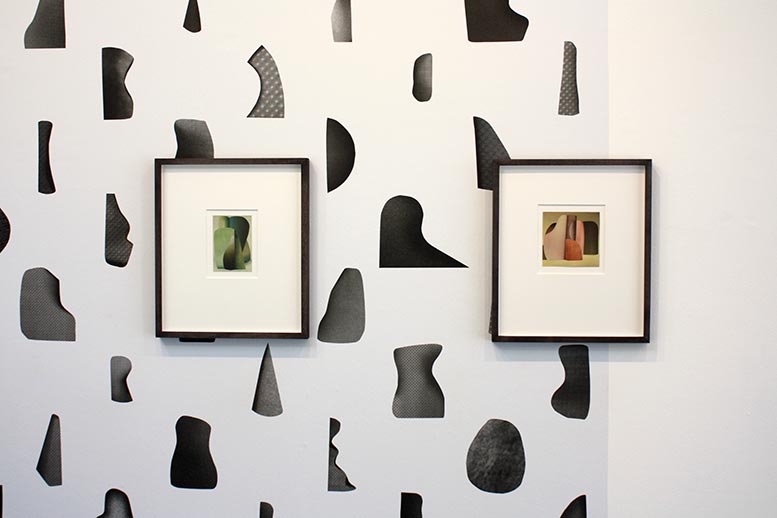
Contemporary artist Hannah Hughes, Installation view. Exhibition A Romance of Many dimensions. Image courtesy: Sid Motion Gallery.
How do you deal with the conceptual difficulty and uncertainty of creating work?
Uncertainty, doubt and precariousness are all built into my process of working, creating forms and structures that appear provisional, hypothetical or subject to change. The collage works are made by assembling image fragments. Based on their incomplete nature, these can be considered unreliable. My photographs of temporary paper pulp sculptures freeze these forms ahead of their imminent collapse. There is an element of absurdity in this kind of attempt to capture in-between states which comes from embracing the condition of ‘not knowing’.
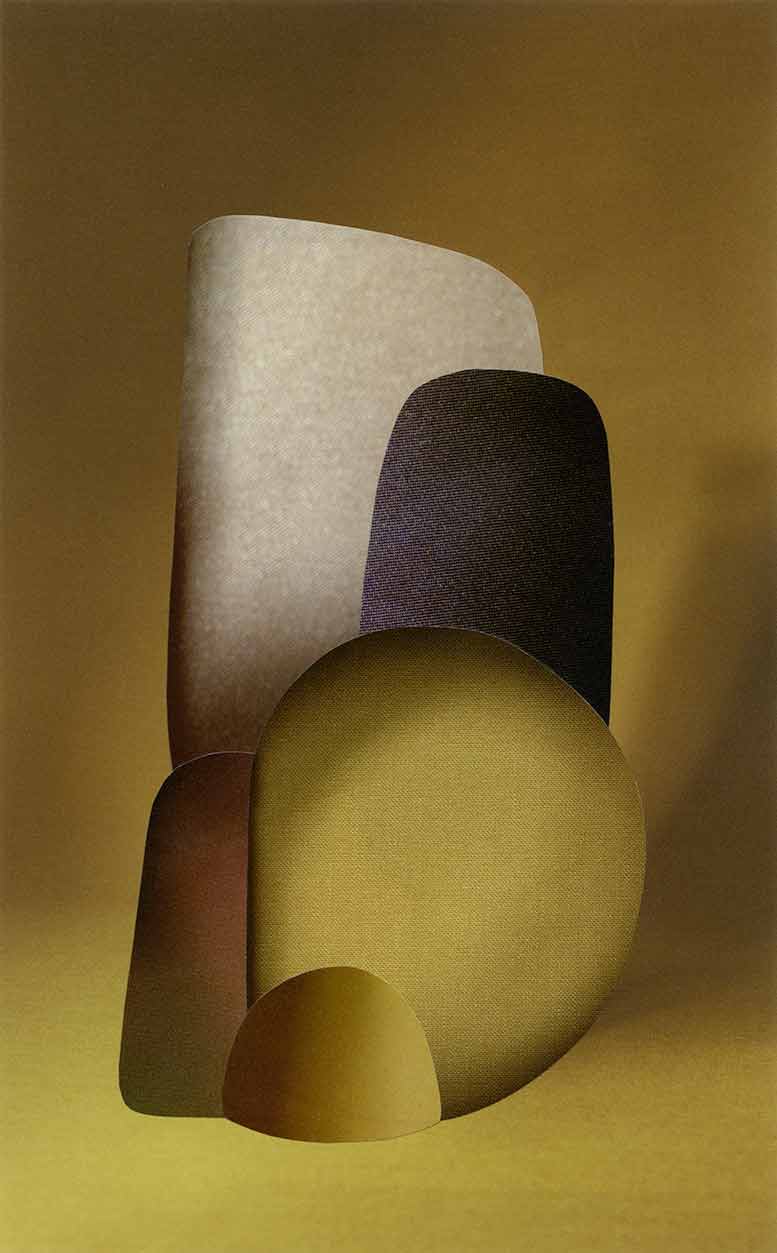
Contemporary artist Hannah Hughes, Mirror Image #37, 2019.
Working with abstracted images, I wanted to create works that appear to exist outside of time and where space feels more fluid.
Contemporary artist Hannah Hughes
What would you call your style?
From the beginning, I worked with photography and moving image, but I also spent many subsequent years focusing on painting. Since 2014, I have primarily worked with collage, bringing other media into dialogue where possible. Collage dips in and out of time, fragmenting and re-sequencing history. Working with abstracted images I wanted to create works that appear to exist outside of time and where space feels more fluid.
Let’s talk about the evolution of your practice over the years.
The process of collage starts with collecting. This leads to a kind of obsessiveness. This is also present in the act of looking for patterns in the collated fragments. Over time, I have assembled an archive of cut shapes, sourced from magazines and auction catalogues. I would remove the main object of the photograph in these and focus on cutting into the negative space. I started to notice typologies emerging – there were orbs, spheres, cones, snaking serpentine lines, lozenges; lots of shapes that looked very similar but were never quite the same. I developed these into monochrome ‘wallpapers’ that are exhibited alongside the collages, as a kind of index that highlights the conjunctive nature of the language embedded within the works.
Tell us about your commitment to your current medium.
The present ‘Mirror Image’ collages involve processes of construction and deconstruction. In these works, all of the image fragments have been created in my studio using the original found shapes from my archive to create shadows, which are then cut out and the original image is discarded. The collection of found imagery has almost become an alphabet that can be endlessly reinterpreted.
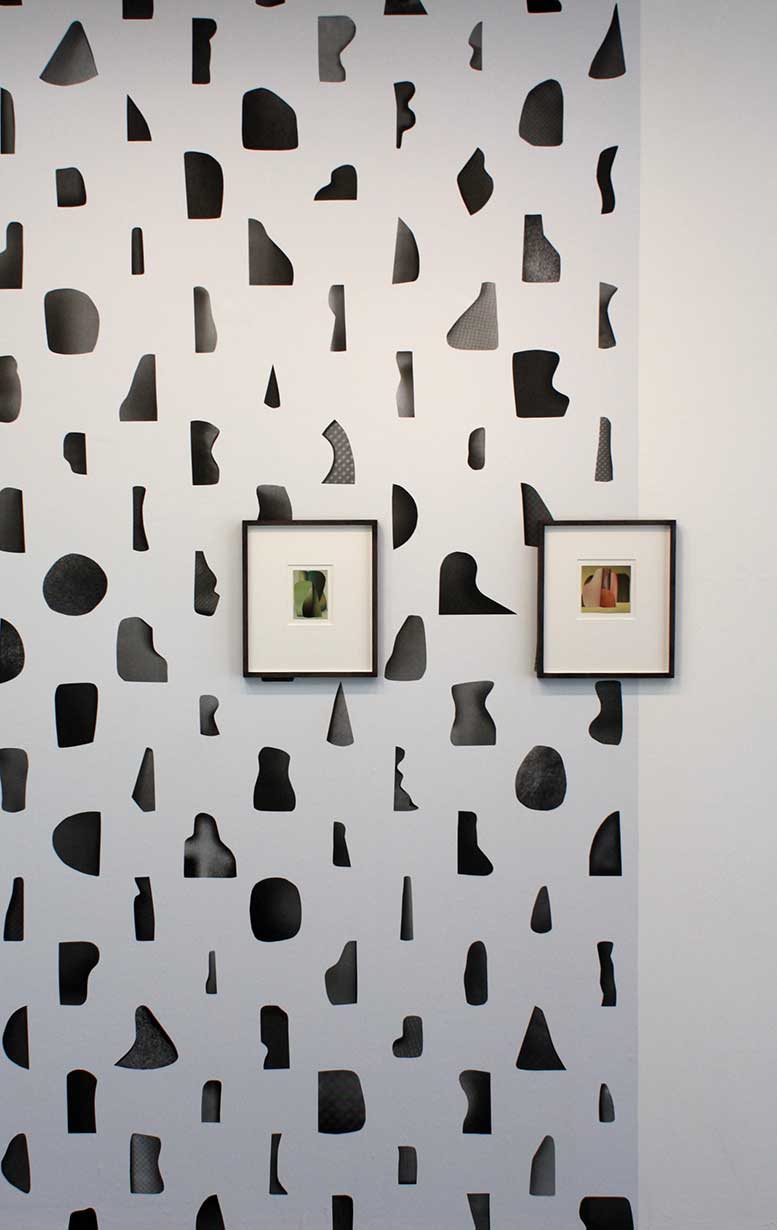
Contemporary artist Hannah Hughes, Installation view. Exhibition A Romance of Many dimensions. Image courtesy: Sid Motion Gallery.
Since the lockdown, I’ve been exploring the idea of the body in movement, thinking about the relationship between sculpture and the active body, considering scale, weight, and the continually morphing aspect of works seen ‘in the round’.
Contemporary artist Hannah Hughes
What inspires you?
One of my most significant references is Brancusi’s own photographs of his studio. In this space, he continually arranged his sculptures like an evolving installation or dance. In his photographs, it appears that he was not only choreographing his sculptures but also paying close attention through the camera to the light and shadow that fell from his skylights. The spaces in between seemed just as activated.
Since the lockdown, I’ve been exploring the idea of the body in movement, thinking about the relationship between sculpture and the active body, considering scale, weight, and the continually morphing aspect of works seen ‘in the round’. I’ve become very interested in strategies of sequencing relating to objects and movement, particularly in the performances of Trisha Brown and Yvonne Rainer.
Let’s talk about your frameworks, references and process.
My current reading material is concerned with AI and machine learning, the new invisible structures within contemporary society and culture. I am researching the current technological advancements in Deep Learning online. Am also reading Adrienne Mayor’s ‘Gods and Robots: Myths, Machines, and Ancient Dreams of Technology’ which draws examples from Greek mythology. It argues that forms of artificial life and automated machines were present in ancient culture. Following on from Room With Its Own Sun, a moving image work shown at Format Festival, Derby in 2019 (in the exhibition, The Office of Revised Futures). I am researching ways in which new technologies can explore the intuitive processes of collage, merging the world of human relationships, materials and touch with new data-driven intelligent networks.

Contemporary artist Hannah Hughes, Static Motion (for Yvonne) Mirror Image #46, 2020.
How does your interaction with a curator, gallery or client evolve from the initial interface, to the working-involvement-relationship?
The relationship and interaction tends to be different each time depending on the type of show. These can be one-offs but also can span a long period of time. For example, I have been working with the London-based curator Rodrigo Orrantia. There have been collaborative projects over the past couple of years that have involved working with multiple formats, processes and modes of presentation. These include a print publication, live performances at art fairs and festivals and a future exhibition. This has been a really interesting and rewarding way of working. Allowing ideas to circulate, gestate and develop between the artists and curator over an extended duration of time.
Tell us about your studio, what kind of a place is it? Could you describe your usual work day in the studio?
My studio in a large shared block, in South East London. It is full of paper fragments, textiles and found pieces of packaging. Usually, I will arrive with some new materials to work with. This might be some found paper pulp or polystyrene that I will start by cutting up or fabrics or papers to make photographic backdrops. Formal discoveries through materials always have the potential to generate completely different ways of working. These initial moments of ‘warming up’ in the studio can be really important. I work on large tables with my cut papers laid out. This is where I spend many hours working out new arrangements. The studio is also where I create all of my photographic material. I usually do screen-based work, like editing, writing or admin at home. The studio thus remains purely a space for material practice.
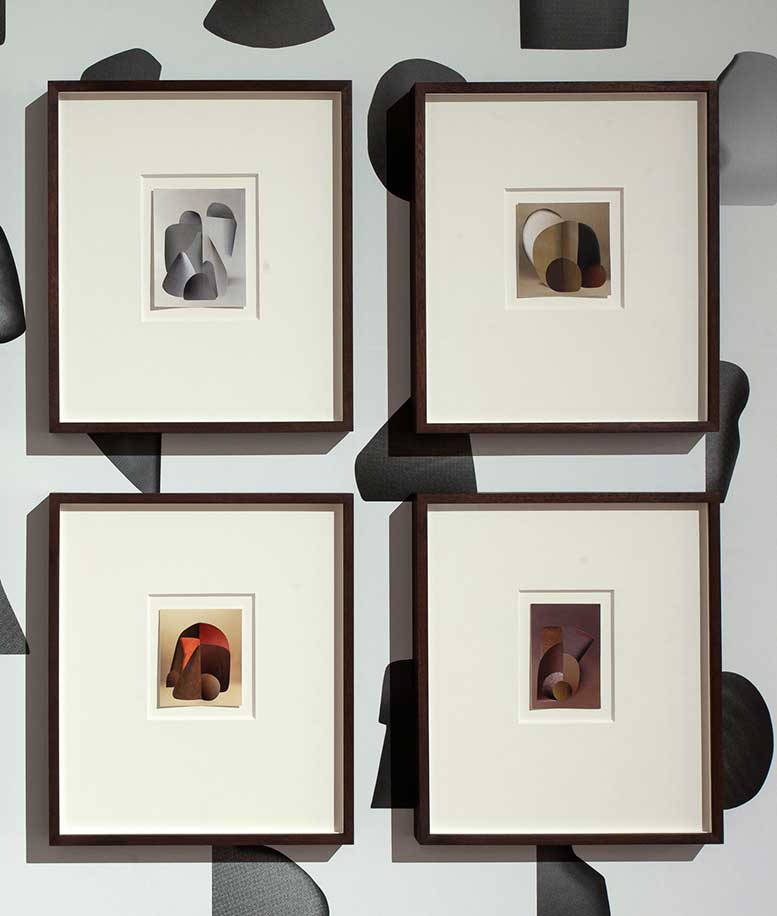
Contemporary artist Hannah Hughes, Photo London. May 2019. Image courtesy: Sid Motion Gallery.
What was your first sale? Do you handle commercials yourself or outsource to a gallery/ agent?
My first sale was of a drawing was in high school, to one of my teachers. I didn’t start selling seriously until much later in life. Recently, I have been lucky to work with Sid Motion Gallery in London, Galerie Wouter van Leeuwen in Amsterdam and Catherine Edelman Gallery in Chicago.
What are you working on now? What’s coming next season?
I am currently preparing for a two-person exhibition with artist Olivia Bax at Sid Motion Gallery in November this year. I am also working on a group publication The State of Things with curator Rodrigo Orrantia and artists Joshua Bilton, Eugenia Ivanissevich, Tom Lovelace and Bärbel Praun. The publication will be launched in September 2020. It is the start of a two year project developing into an installation during Landskrona festival, Sweden in 2022.
I am also taking part in a group exhibition Super Flatland curated by Paul Carey Kent and Yuki Miyake at White Conduit Projects, London- opening on Weds 16 September.

Contemporary artist Hannah Hughes, Zip-Up, Mirror Image #47, 2020
What were you working on when the lockdown was announced?
Before the lockdown, I had been working on some large scale photographic collages. I am now able to resume these as photographic studios are opening up again. Working at a larger scale requires a different approach to the collage process. I am working with just collaged pieces. One is spliced through the other to create a decisive seam within the image.
I was also about to start a new set of ceramic works. Had just completed one test piece with paper porcelain. Currently, I’m working with paper pulp packaging. It is used to protect and cocoon fragile objects. I’m collecting discarded offcuts and re-configuring their forms in temporary arrangements that are presented as photographs. The paper porcelain sculptures are casts of these packaging fragments.
How has this affected your practice and plans?
There have been a couple of postponed exhibitions this year as a direct result of the pandemic. I am hopeful that they will resume at a later date. The lockdown forced me into moving my practice into the home for the past few months. Operating in a confined area is challenging but also in some ways interesting. I have been reflecting on the limited movements of the body and the desire for touch, connection and material presence in an increasingly virtual world.
Before you go – you might like to browse our Artist Interviews. Interviews of artists and outliers on how to be an artist. Contemporary artists on the source of their creative inspiration.








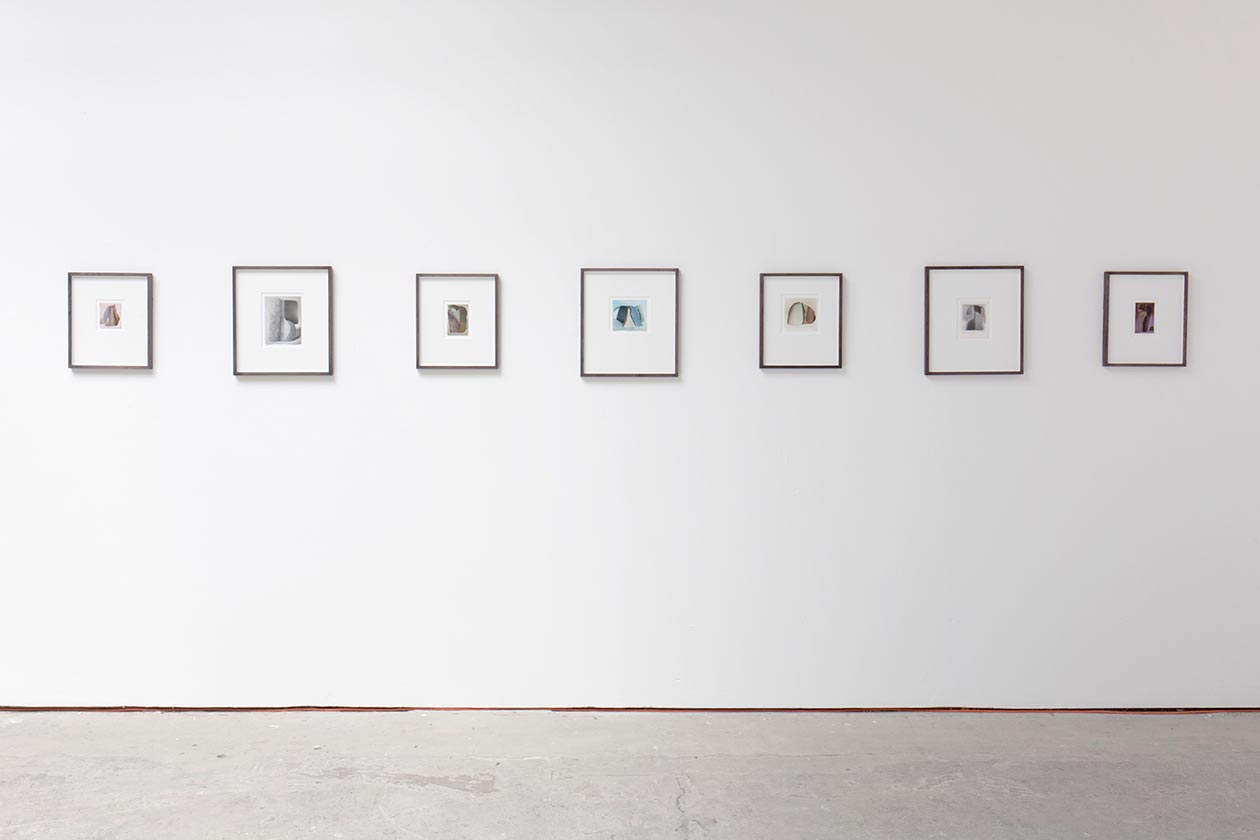



Add Comment